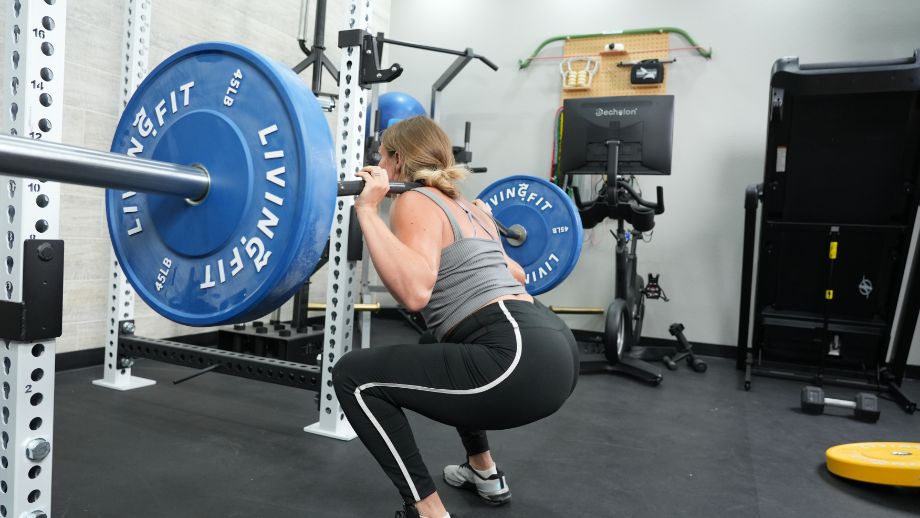We test and review fitness products based on an independent, multi-point methodology. If you use our links to purchase something, we may earn a commission. Read our disclosures.
When embarking on a strength training journey, it’s not just how much weight you lift but how you lift it. Each movement involves a symphony of muscle contractions, each playing a unique role in developing muscular strength, endurance, and overall fitness.
Whether it’s the upward pull in a cable biceps curl or the controlled descent in a close-grip bench press, concentric and eccentric contractions govern the rise and fall of the lift. These exercise phases dictate muscle fiber tension and engagement, influencing everything from muscle mass (hypertrophy) to the risk of muscle damage. As a certified personal trainer (CPT) and longtime lifter, I’ll break down the differences of concentric vs eccentric contractions so you can understand why factors like range of motion and time under tension make such a difference with resistance exercises.
RELATED: A Comprehensive Guide To Eccentric Training
So, whether you want to strengthen your triceps, increase your power production, or add more skeletal muscle, this comprehensive guide will empower you to take your eccentric and concentric resistance training to the next level.
What Are Concentric and Eccentric Muscle Contractions?
Before delving deeper into the types of muscle contractions, it’s crucial to understand what a muscle contraction is. Simply put, it involves the shortening and lengthening of your muscle fibers to facilitate movement.

This can be divided into four types: concentric, eccentric, isometric, and isotonic.
- Concentric contractions: This phase occurs when the muscle shortens as it contracts, pulling on another structure (such as a bone) to move. For instance, the upward phase of a dumbbell curl is a concentric action, where the biceps muscle shortens to lift the weight toward the shoulder.
- Eccentric contractions: Unlike concentric movements, eccentric contractions occur when the muscle elongates under tension, often during the lowering phase of an exercise. An example is the downward movement in a pull-up, where the back muscles lengthen while still bearing the load.
- Isometric contractions: This occurs when the muscle exerts force without changing its length, such as holding the starting position in a plank exercise.
- Isotonic contractions: These types of muscle contractions involve muscles changing length under constant tension, as seen in isotonic exercises like the back squat and bench press. These contractions, including both concentric and eccentric phases, are key for building strength and muscle mass.
RELATED: Isometric Exercises
Benefits of Concentric Training
Concentric training is essential for developing muscular strength and power. This lift phase, where muscles shorten under a load, offers distinct advantages for everyday activities and athletic performance.
Enhances Muscular Activation
Concentric exercises activate multiple muscle fibers1 rapidly, which is crucial for activities that require explosive muscle actions, such as jumping or sprinting. Research indicates that concentric training can significantly enhance the rate of force development2, a key factor in many sports, including weightlifting and powerlifting. This quick activation helps improve overall athletic performance and functional daily movements.
May Increase Metabolic Rate
Engaging in concentric training can elevate your metabolic rate, leading to increased caloric burn during and after workouts. A 1997 study3 showed that a single bout of concentric exercises significantly increased basal metabolic rate (BMR) 48 hours after exercise. This can boost excess post-exercise oxygen consumption (EPOC) considerably, enhancing fat oxidation and overall energy expenditure.
Helps Build Muscle Strength and Size
The nature of concentric movements helps in quickly building muscle strength and hypertrophy. Concentric training effectively increases muscle mass because it typically allows you to use heavier weights with more explosive power, stimulating muscle growth through mechanical stress and metabolic fatigue.
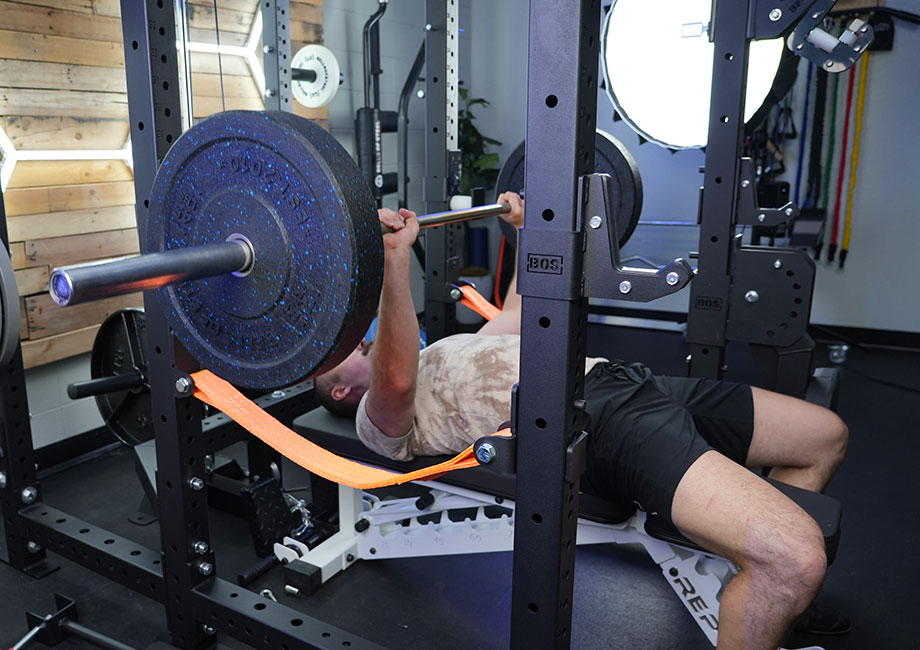
RELATED: How To Build Muscle
May Improve Athletic Performance
Concentric training is particularly beneficial in sports that require high levels of power output, such as sprinting and jumping. Regular training focusing on the concentric phase can improve overall sport-specific techniques and performance efficiencies.
Benefits of Eccentric Training
Although eccentric training is often underutilized, it offers substantial benefits for strength, rehabilitation, and overall muscle health. The phase of exercise where muscles lengthen under tension provides critical advantages distinct from concentric training.
May Produce Greater Muscular Strength Gains
Eccentric training is more effective than concentric training at increasing muscle strength4 and size. The muscle damage occurring during eccentric contractions stimulates a robust repair process, leading to stronger, larger muscle fibers. This strength training technique is especially beneficial for overcoming plateaus.
May Help Improve Muscle Control and Efficiency
The controlled lengthening of muscle fibers during eccentric training helps enhance neuromuscular coordination and efficiency. According to a 2017 study5, eccentric training can improve the control of muscle movements and reduce the energy expenditure for certain tasks, making movements more efficient and less taxing.
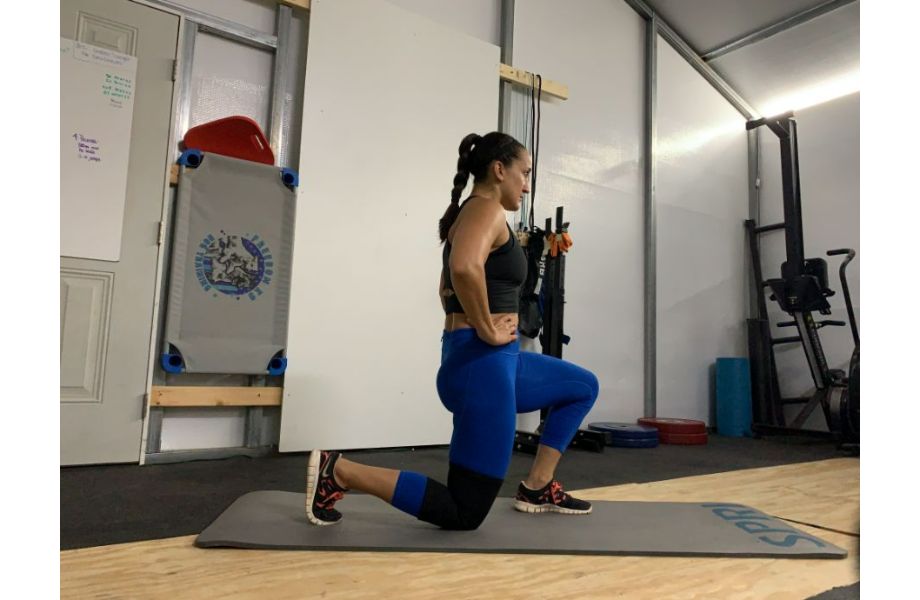
RELATED: Balance Exercises
May Help Reduce Risk of Injury
Incorporating eccentric exercises into a training program can strengthen tendons and increase muscle flexibility, both crucial for injury prevention. Studies suggest that eccentric training can improve tendon health6 and joint stability, thus reducing the likelihood of injuries during physical activities.
May Enhance Muscular Endurance
Eccentric training has been found to enhance muscular endurance7, allowing athletes and lifters to perform at a higher level for longer periods. This benefit is particularly useful for endurance sports and activities requiring sustained muscle contractions.
RELATED: Muscular Endurance Exercises
Concentric Vs Eccentric: Sample Workouts
Ready to raise (and lower) the bar with more intent? These sample strength training routines emphasize both concentric and eccentric movements to help beginners focus on each phase of muscle contractions during their workouts.
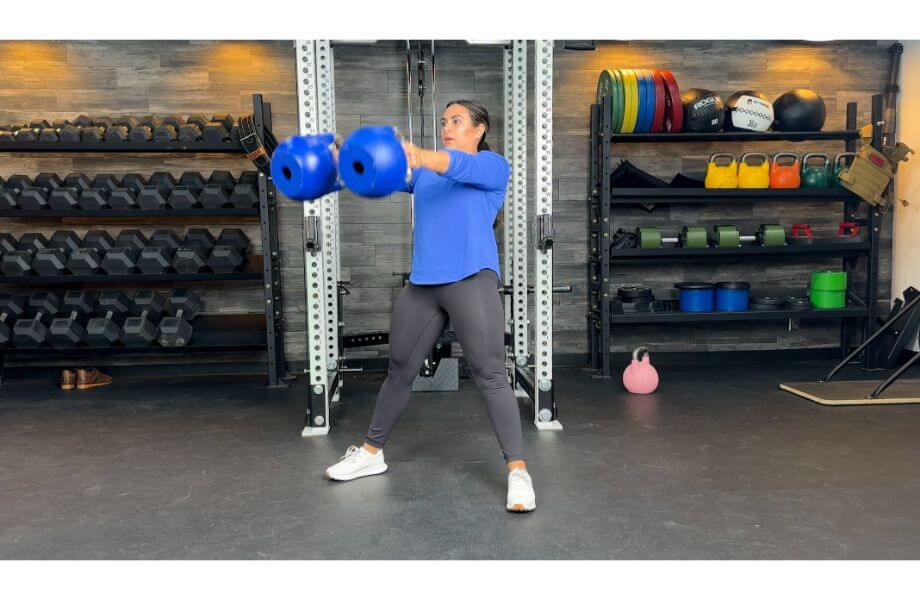
As a CPT with nearly two decades of weightlifting experience, I’ve designed these workouts to help new trainees experience the unique benefits of each phase. With concentric, eccentric, and hybrid options, you’ll have sufficient variety to get started.
RELATED: Workout Schedule For Beginners
Concentric-Focused Workout
This workout emphasizes the concentric phase of each exercise, where the muscle shortens as it contracts. The goal is to perform these movements with power and speed.
| Exercise | Instructions | Sets | Reps |
| Push-Up | Start in the standard push-up position. Lower yourself slowly to the ground, then push up explosively. | 3 | 8-10 |
| Squat Jump | Start in a squat position. Explode upward into a jump as quickly as possible. Land softly and repeat. | 3 | 6-8 |
| Kettlebell Swing | Begin with the kettlebell between your legs, perform a slight squat, then swing the kettlebell upward with a powerful hip thrust. Use the momentum generated by the thrust to cycle into the next rep. | 3 | 10-12 |
| Bench Press | Lie on a weight bench with a barbell. Grab the bar with your hands about shoulder-width apart. Unrack the bar, then lower it slowly toward your chest, then push it up rapidly. | 3 | 6-8 |
RELATED: 17 Push-Up Variations
Eccentric-Focused Workout
This routine focuses on the eccentric phase, where the muscle lengthens under tension. The key is to slow down the lowering phase of each exercise.
| Exercise | Instructions | Sets | Reps |
| Pull-Up | Use a box or jump to reach the ‘chin over bar’ position. Slowly lower yourself to a count of 4-5 seconds until your arms are fully extended. | 3 | 5-8 |
| Romanian Deadlift | Hold a barbell with a grip slightly wider than shoulder width. Hinge at your hips and lower the barbell while keeping your back straight, then rise slowly back to the starting position. | 3 | 8 |
| Leg Curl | Use a leg curl machine. Curl your legs toward your glutes, then extend them slowly to keep tension on your hamstrings. | 3 | 10-12 |
| Incline Dumbbell Press | Lie on an incline bench with a dumbbell in each hand. Press the dumbbells up, then lower them slowly to a count of 5. | 3 | 8 |
RELATED: Pull-Up Variations
Hybrid Workout
This workout integrates concentric and eccentric phases within each exercise for a well-rounded strength-training approach.
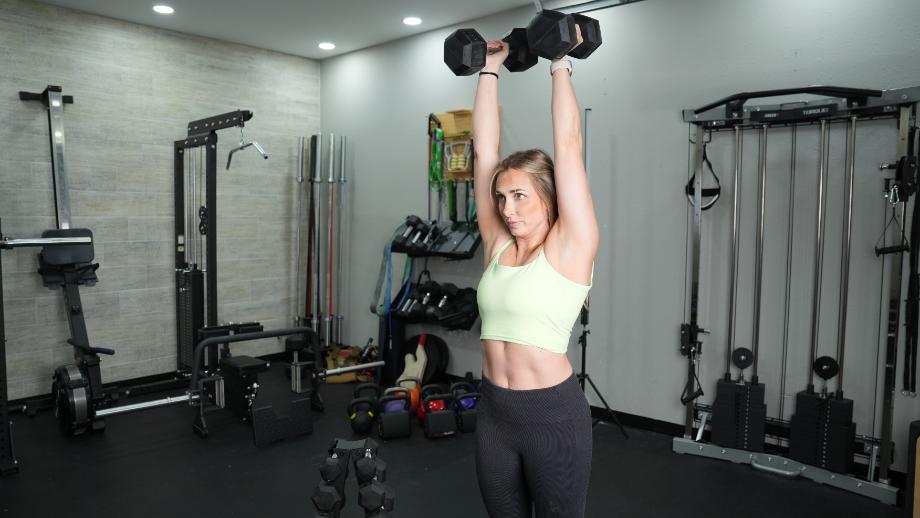
| Exercise | Instructions | Sets | Reps |
| Squat | Perform a standard back squat, focusing on lowering slowly and rising quickly. | 3 | 8-10 |
| Dumbbell Shoulder Press | Press the dumbbells upward quickly, then lower them slowly back to the starting position. | 3 | 8 |
| Barbell Row | Stand with your feet hip-width apart, holding a barbell with an overhand grip. Bend your knees slightly and hinge at your hips until your torso is nearly parallel to the floor. Pull the barbell toward your lower ribs, keeping your elbows close to your body, then slowly lower it back to the starting position. | 3 | 10 |
| Step-Up | Step up onto a box quickly, then step down slowly and with control. You can make this bodyweight exercise more difficult by holding a pair of the best dumbbells for added resistance. | 3 | 10 per leg |
RELATED: 10 Best Bodyweight Exercises
Common Mistakes in Concentric and Eccentric Training
Avoiding common mistakes in concentric and eccentric training can ensure you get the most out of your time in the gym. Here’s what you need to watch out for:
Inconsistent Tempo
Failing to maintain a consistent tempo, especially during the eccentric phase, can lead to suboptimal muscle engagement and uneven strength development. A consistent and controlled tempo ensures that muscles are adequately stressed throughout the movement, promoting better gains and reducing your risk of injury.
RELATED: Tempo Training
Neglecting Eccentric Control
Many people rush the eccentric phase without maintaining control, which diminishes the exercise’s effectiveness and increases your risk of injury. Controlled eccentric actions can enhance muscle growth and strength due to increased time under tension and muscle fiber engagement.
Overloading Too Quickly
New lifters tend to increase the load they lift too quickly, particularly during eccentric training, where muscles can handle more weight. This often leads to overtraining and injury, as your muscles and connective tissues aren’t conditioned enough yet to handle the increased stress.
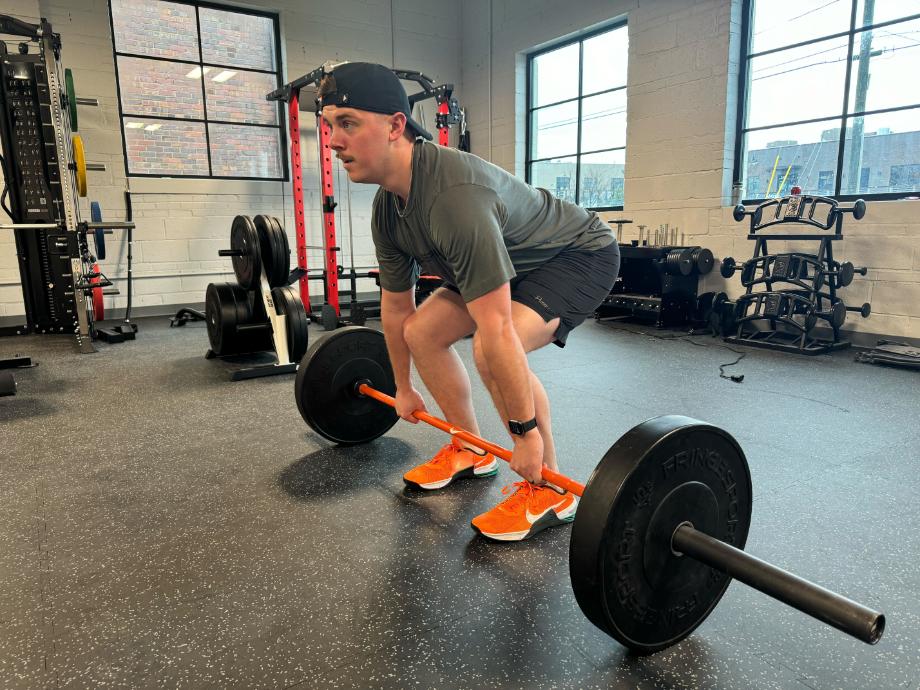
RELATED: 10 Signs of Overtraining
Uneven Focus During Concentric vs Eccentric Phases
Some trainees focus predominantly on the concentric phase (lifting the weight) and pay less attention to the eccentric phase (lowering the weight), missing out on the unique benefits of eccentric training. Balancing the focus between these phases can lead to more comprehensive strength development and muscular improvements.
Skipping Warm-Ups
Neglecting a proper warm-up before engaging in any form of exercise can lead to muscle strains, reduced performance, or injuries. A thorough warm-up increases blood flow to your muscles and prepares your joints, significantly reducing the risk of injuries.
RELATED: Best Warm-Up Exercises
Tips To Maximize Your Muscle Contractions
Optimizing muscle contraction techniques can significantly enhance the effectiveness of your workouts and put you on the path to #Gains. Implement these strategies to deepen muscle engagement and maximize the benefits of each training session.
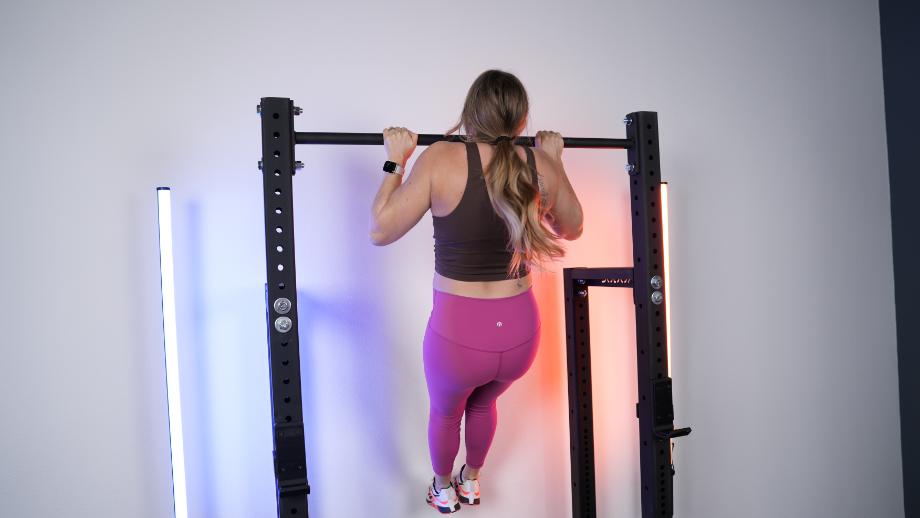
- Focus on form: Proper form is crucial for effective muscle contractions. Performing a fundamental movement pattern or any type of exercise correctly will target the intended muscles without unnecessary strain on other areas.
- Mind-muscle connection: Consciously focus on the muscle you are working. Visualizing the muscle contraction during the exercise can enhance activation and improve the quality of the contraction.
- Control the tempo: Varying the speed of your movements can impact muscle contractions. Implementing slow, controlled eccentrics and explosive concentrics can maximize muscle tension and stimulate growth.
- Increase time under tension: Lengthening the time your muscles are under continuous tension increases their workload, which can lead to enhanced strength and hypertrophy8. This can be achieved by slowing down the eccentric phase of the lift and minimizing rest at the top and bottom of movements.
- Progressive overload: Gradually increasing the weight, volume (total reps and sets), or intensity of exercises ensures continuous muscle improvement and adaptation. This principle pushes muscles to grow stronger and more efficient.
RELATED: What Is Progressive Overload?
Concentric Vs Eccentric: Final Thoughts
The distinction between concentric and eccentric actions offers more than technical knowledge—it’s an opportunity to understand the relationship between balance and growth. iIn the gym, the push and the pull are equally important. Embracing both phases of muscle contractions optimizes your physical capabilities and can teach you an important lesson about appreciating both sides.
When it’s time for your next training session, consider the weight and how you engage with it. This deeper awareness can lead to more profound gains and a more intentional lifting experience.
Concentric Vs Eccentric: FAQs
What’s the difference between eccentric vs concentric?
Concentric contractions involve muscle shortening as it contracts, typically during the lifting phase of an exercise. Eccentric contractions involve muscle lengthening under tension, typically during the lowering phase.
What are the benefits of concentric and eccentric exercises?
Concentric exercises help build power and speed, while eccentric exercises improve muscle strength and control and may help reduce injury risk.
Is a squat concentric or eccentric?
A squat includes both phases: the descent (eccentric) when the muscles lengthen and the ascent (concentric) when they shorten.
RELATED: What Muscles Do Squats Work?
What is isometric training?
Isometric training involves exercises where the muscle length doesn’t change while exerting force, commonly seen in holds and static positions.
How do I add eccentric training to my workout?
Incorporate slow negatives, increase time under tension during the lowering phase of lifts, or use eccentric-only exercises like Nordic curls.
References
- Padulo, J., Laffaye, G., Chamari, K., & Concu, A. (2013). Concentric and Eccentric: Muscle Contraction or Exercise? Sports Health, 5(4), 306. https://doi.org/10.1177/1941738113491386
- Maffiuletti, N. A., Aagaard, P., Blazevich, A. J., Folland, J., Tillin, N., & Duchateau, J. (2016). Rate of force development: Physiological and methodological considerations. European Journal of Applied Physiology, 116, 1091-1116. https://doi.org/10.1007/s00421-016-3346-6
- Williamson, D. L., & Kirwan, J. P. (1997). A single bout of concentric resistance exercise increases basal metabolic rate 48 hours after exercise in healthy 59-77-year-old men. The journals of gerontology. Series A, Biological sciences and medical sciences, 52(6), M352–M355. https://doi.org/10.1093/gerona/52a.6.m352
- Carothers, Kyle; Carothers, Kyle F; Alvar, Brent A; Dodd, Daniel J; Johanson, Jeremy C; Kincade, Brian J; Kelly, Stephen B. Comparison Of Muscular Strength Gains Utilizing Eccentric, Standard And Concentric Resistance Training Protocols. Journal of Strength and Conditioning Research 24():p 1, January 2010. | DOI: 10.1097/01.JSC.0000367079.76059.a5
- Lepley, L. K., Lepley, A. S., Onate, J. A., & Grooms, D. R. (2017). Eccentric Exercise to Enhance Neuromuscular Control. Sports Health, 9(4), 333-340. https://doi.org/10.1177/1941738117710913
- Watson, P. J., & Barry, S. (2015). WHY ARE ECCENTRIC EXERCISES EFFECTIVE FOR ACHILLES TENDINOPATHY? International Journal of Sports Physical Therapy, 10(4), 552-562. https://www.ncbi.nlm.nih.gov/pmc/articles/PMC4527202/
- Drexel, H., Saely, C. H., Langer, P., Loruenser, G., Marte, T., Risch, L., Hoefle, G., & Aczel, S. (2008). Metabolic and anti-inflammatory benefits of eccentric endurance exercise – a pilot study. European journal of clinical investigation, 38(4), 218–226. https://doi.org/10.1111/j.1365-2362.2008.01937.x
- Burd, N. A., Andrews, R. J., West, D. W., Little, J. P., Cochran, A. J., Hector, A. J., Cashaback, J. G., Gibala, M. J., Potvin, J. R., Baker, S. K., & Phillips, S. M. (2012). Muscle time under tension during resistance exercise stimulates differential muscle protein sub-fractional synthetic responses in men. The Journal of Physiology, 590(Pt 2), 351-362. https://doi.org/10.1113/jphysiol.2011.221200
Further reading

Our ProForm Performance 600i Treadmill review takes a look at this now-discontinued machine and offers alternatives. Read more

When embarking on a strength training journey, it’s not just how much weight you lift but how you lift it. Each movement involves a symphony of muscle contractions, each playing a unique role in developing muscular strength, endurance, and overall fitness. Whether it’s the upward pull in a cable biceps curl or the controlled descent in a close-grip bench press, » Read more about: From Lifting to Lowering: Your Expert Guide to Concentric Vs Eccentric Training » Read more

Rogue Fitnessis one of, if not THE top gym equipment manufacturer and retailer in the world. So, it makes sense that one of the most asked questions we receive is, "how can I get a discount on Rogue Fitness Equipment?" Here's how... Read more

In this RSP Nutrition Amino Lean pre-workout review, one of our testers shares her thoughts on the formulation and effects of this sports nutrition supplement. Read more

